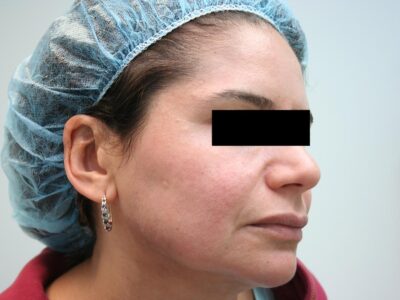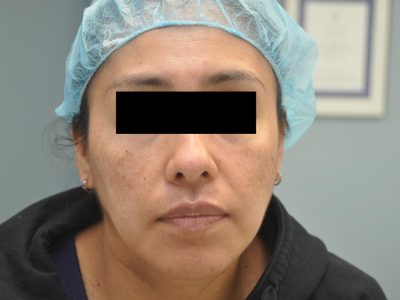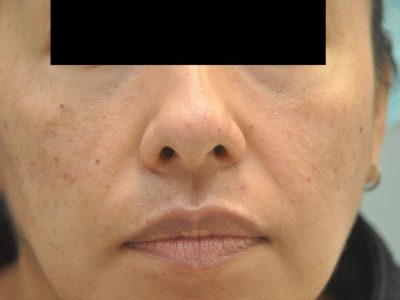Melasma Treatment
What is Melasma?
Melasma, also known as chloasma, is a common skin condition that causes brown and grey-brown patches to form on the patient’s face. When the color-making cells in the skin, melanocytes, produce too much color, it produces patches of darker skin. Although it can develop on other areas of the body that receive a lot of sun exposure, most patients get melasma on their cheeks, nose, forehead, chin, and above the upper lip.
Schedule a Consultation
To learn more about melasma treatment, please contact us today at (617) 381-1717 or send us a message below to schedule a consultation.
Risk Factors For Developing Melasma
Women are far more likely to develop melasma than men. Only about 10 percent of cases occur in males. In addition, people with darker skin tones are more likely to develop melasma because they already have more active melanocytes in their skin. People with a family history of melasma have an increased chance of getting melasma themselves.
What Causes Melasma?
Also known as “pregnancy mask,” the exact causes of melasma are not fully understood. Pregnancy, birth control pills, some other medications, and the use of harsh cosmetics can play a role. In addition, the following can be common triggers:
- Sun exposure: Ultraviolet (UV) light from sun exposure stimulates the melanocytes. This is the skin’s protection mechanism against sun damage, darkening the skin. Therefore, people who get melasma usually have reoccurrences during the summer months.
- Hormonal fluctuations: There is a relationship between hormonal changes and melasma. Pregnant women often get melasma, and their wildly fluctuating hormone levels are thought to be the trigger. In fact, one-half of all melasma cases develop initially during pregnancy. Also, women on birth control pills and hormone replacement therapy patients are prone to the condition.
- Skincare products: If a skincare product or cosmetic product irritates your skin, melasma can return or worsen.
Melasma Treatment Before & After






How is Melasma Diagnosed?
As you would expect, most cases of melasma can be diagnosed simply by visually checking the patient’s skin. To get an idea of how deeply the condition penetrates the skin, Dr. Khatri may use a special light. If, after an examination, Dr. Khatri is uncertain if your condition is indeed melasma, he may take a tiny skin sample to confirm the diagnosis.
Melasma Treatment
At Skin & Laser Surgery Center of New England, Dr. Khatri uses a combination of laser resurfacing and chemical bleaching agents to treat melasma. Treatment does not require injection anesthesia and can be done with anesthetic creams. Patients experience relatively little pain and require little downtime. Melasma can fade, as mentioned above when issues such as hormone fluctuations level off. However, it can continue to return without treatment.
Dr. Khatri even offers treatment to patients that have persistent and treatment-resistant melasma. In those cases, patients may need maintenance treatments which could take a few months to complete. Therefore, some patients will not see immediate results. Treatment options at Skin & Laser Surgery Center of New England can include:
- Hydroquinone: This medicine lightens the skin and is often the first treatment option. Dr. Khatri can prescribe more effective hydroquinone than is available over the counter.
- Tretinoin and corticosteroids: these options can enhance skin lightening. There may even be an option of prescribing a single medicine with hydroquinone, tretinoin, and a corticosteroid.
- Other skin lightening creams: there are other non-hydroquinone based creams that can also be used safely to lighten melasma
- Laser resurfacing: Laser resurfacing can effectively remove areas of persistent melasma.
- Chemical peels: chemical peels remove the top layer of the epidermis and can be effective for lightening areas with melasma.
How can I prevent melasma From Developing?
In order to prevent melasma from developing or reoccurring, especially if you have darker skin tones, be sure to use the following tips:
- Wear sunscreen: Sun exposure triggers melasma, so wearing sunscreen with at least an SPF of 30 is recommended at all times. Your sunscreen needs to protect against both UV-A and UV-B rays.
- Wear wide-brimmed hats and sunglasses: Some studies show that even with sunscreen on, some people still develop melasma. It’s thought that longer UV wavelengths may be to blame. Therefore, if you’re prone to developing melasma, protective clothing and sunglasses are a must.
- Use gentle cosmetics and skincare products: If you’re using products that tend to sting or burn when applied, they can worsen melasma.
- Avoid waxing: Waxing areas such as above the upper lip can cause skin inflammation that worsens melasma.
- Adjust Hormones: Patients that are using birth control pills with hormones can adjust their pills or their contraception method.
Tips to prevent melasma during pregnancy
In addition to sunscreen and protective sun clothing, patients should be extra cognizant of the lotions, cosmetics, and cleansers they use during pregnancy. For instance, shower gels with natural extracts are a better choice than more harsh formulations. It is important to avoid soaps and gels with strong perfumes, as well.
Will my chloasma continue after pregnancy?
For most people, once their hormones return to normal levels after childbirth their melasma resolves itself. However, for patients with darker skin tones, patients returning to birth control pills, or those that are genetically predisposed to melasma can have it reoccur.
